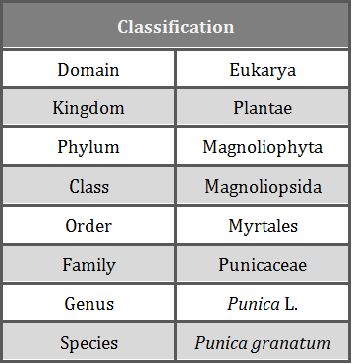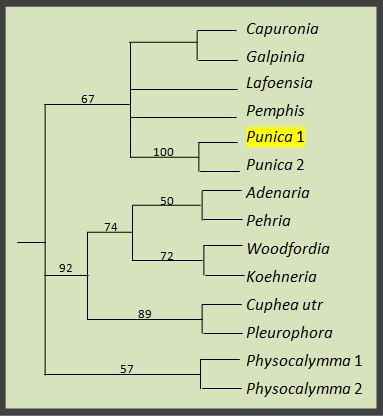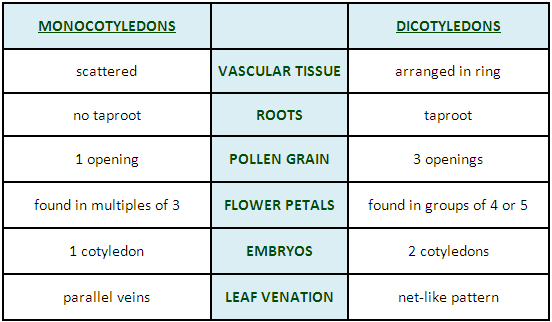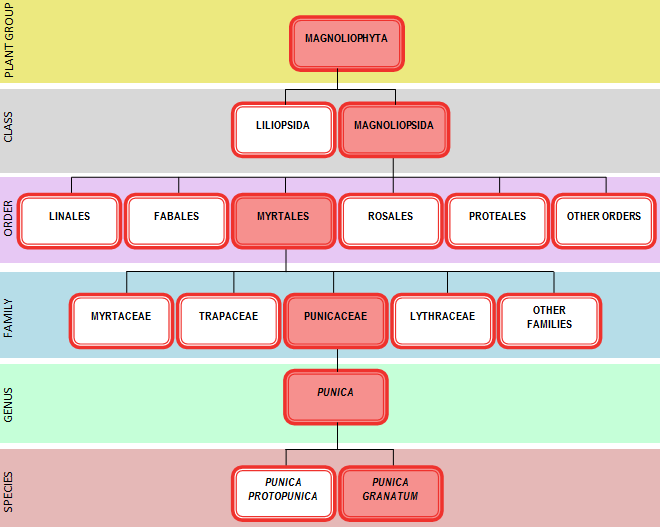Classification
 DOMAIN: EUKARYA
DOMAIN: EUKARYA
Organisms within this domain are eukaryotic; they each have a
true nucleus and membrane-bound organelles. The DNA is contained
within the nucleus.
KINGDOM: PLANTAE
Nearly all members of this kingdom are autotrophic and carry out
photosynthesis to acquire nutrients. Species within this
kingdom exhibit an alternation of generations, meaning their
life cycles consist of both multicellular haploid and
multicellular diploid stages.
PHYLUM: MAGNOLIOPHYTA
This phylum (also known as Phylum Anthophyta) consists of flowering plants called angiosperms.
Pollination in these members occurs via wind, water, or animals. The
seed is found within a protective covering called fruit.
Figure 1 (above). Diagram displays the taxonomic breakdown of the pomegranate from the origin of life to the plant group based on morphological characteristics.
CLASS: MAGNOLIOPSIDA
Members of this class are commonly referred to as dicotyledons. They
have distinct characteristics that set them apart from the
monocotyledons, which make up the rest
of the Phylum Magnoliophyta.
Figure 2 (above). Chart compares characteristics of monocotyledons and dicotyledons.
Check out an example of a monocot ... garlic.
ORDER: MYRTALES
The shoots of these plants have phloem within the xylem as well as more than one layer of phloem surrounding the xylem.
FAMILY: PUNICACEAE
Members of this family possess simple spiral leaves. They have
floral organs that are made up of five to eight petals as well as
five to eight sepals. Fruit emerges from the calyx and holds many
seeds.
GENUS: PUNICA L.
This is the lone genus within Family Punicaceae. It contains two species: Punica granatum and Punica protopunica.
Figure 3 (above). Diagram displays the taxonomic breakdown of the pomegranate from plant group to species based on morphological characteristics.
As displayed in the diagram above, Punica granatum is a member of the Family Punicaceae, which belongs in the Order Myrtales. Another family within this Order, Family Myrtaceae, contains Eucalyptus dives. Click on the following link to check out this organism, more commonly known as broad-leaf peppermint gum.
 SPECIES: PUNICA GRANATUM
SPECIES: PUNICA GRANATUM
Punica granatum literally translates into “seeded
apple”. Commonly known as the pomegranate, this species is
a deciduous tree with thorny branches, thick elongated leaves,
and hardy fruit that contains many seeds.
Figure 4 (on left). This molecular phylogeny outlines the evolutionary relationship of Punica granatum with other organisms based on molecular analysis. Information acquired from International Journal of Plant Sciences - November 2005.
To learn where you can find Punica granatum, visit
HABITAT.



